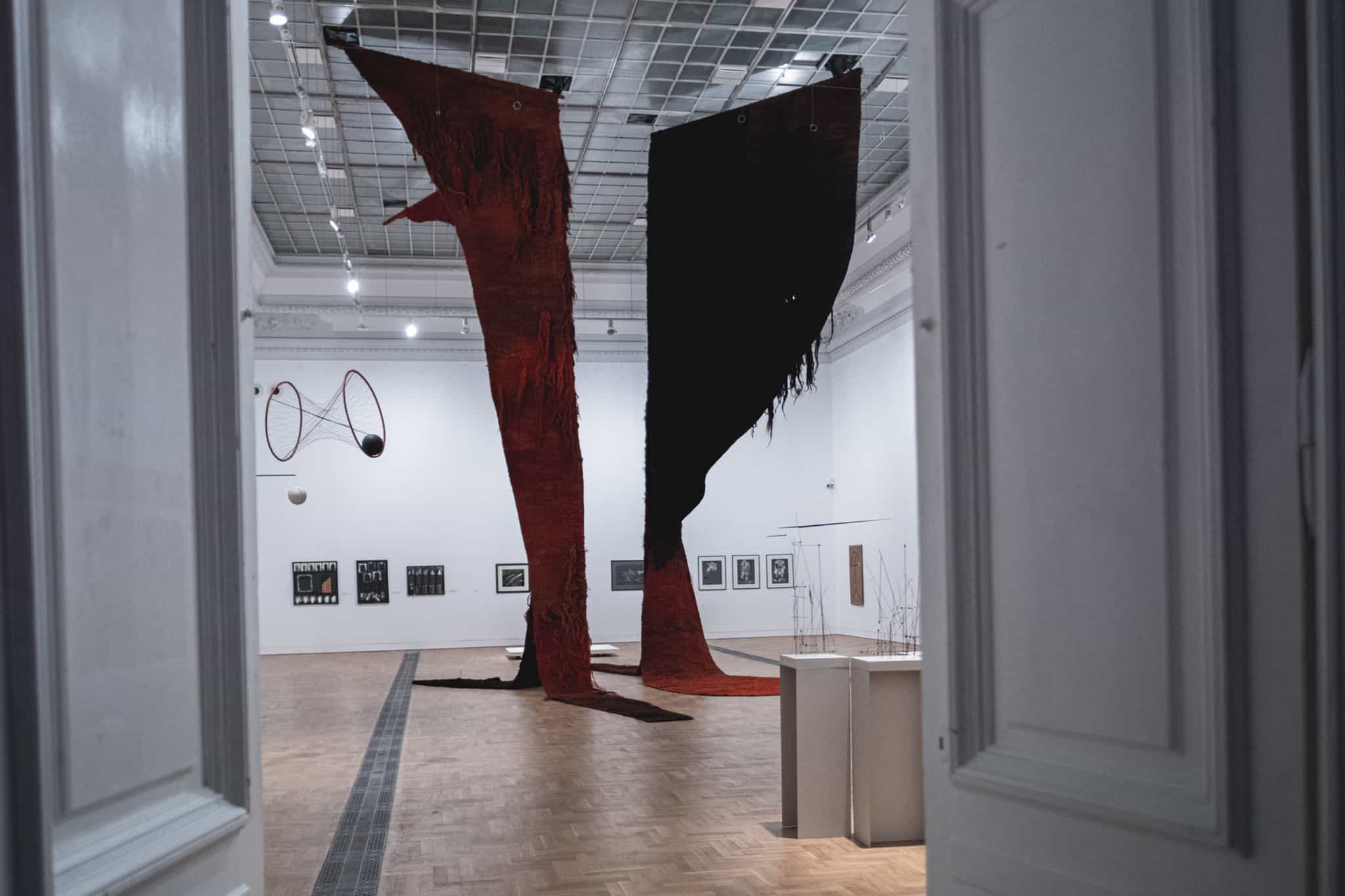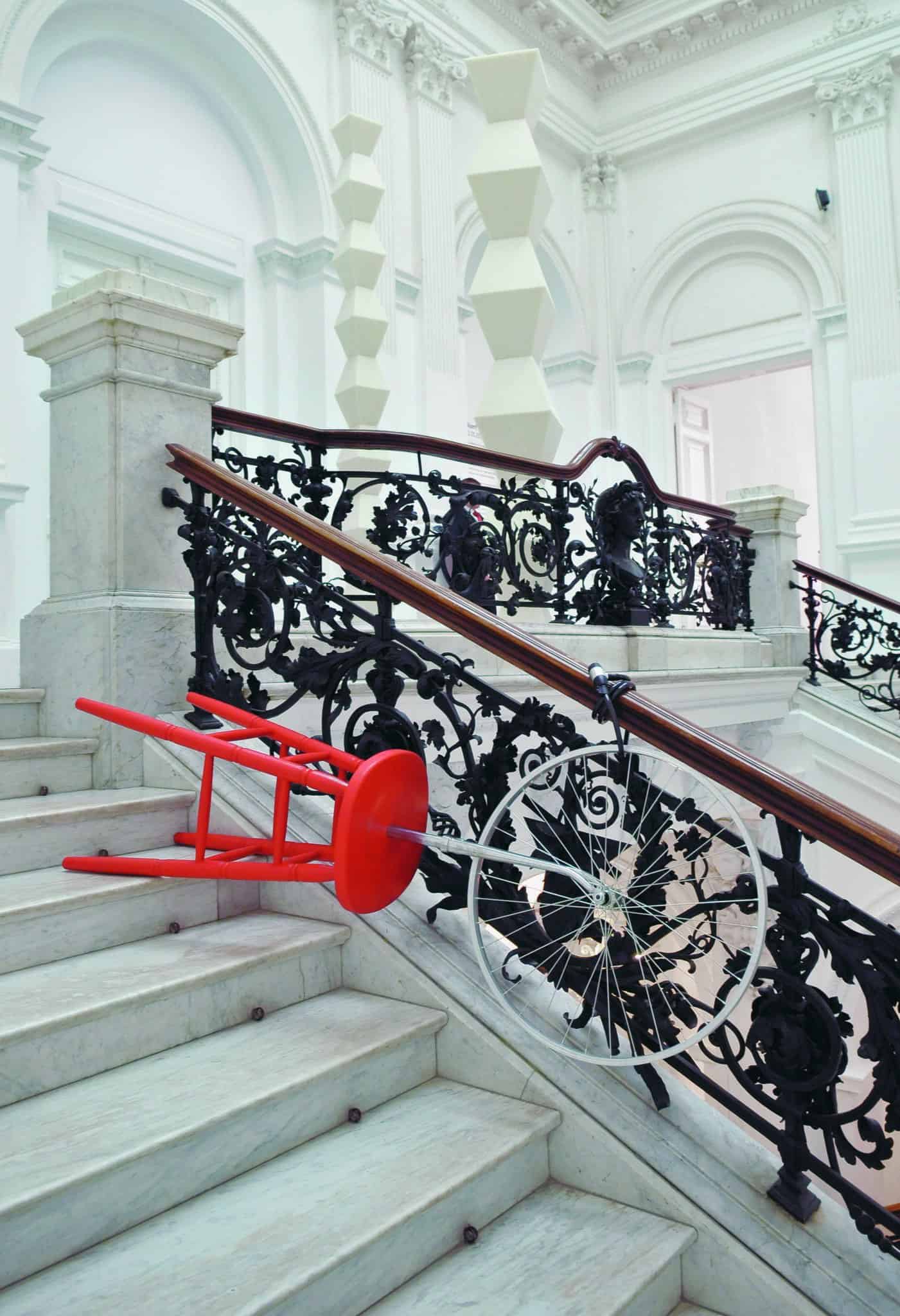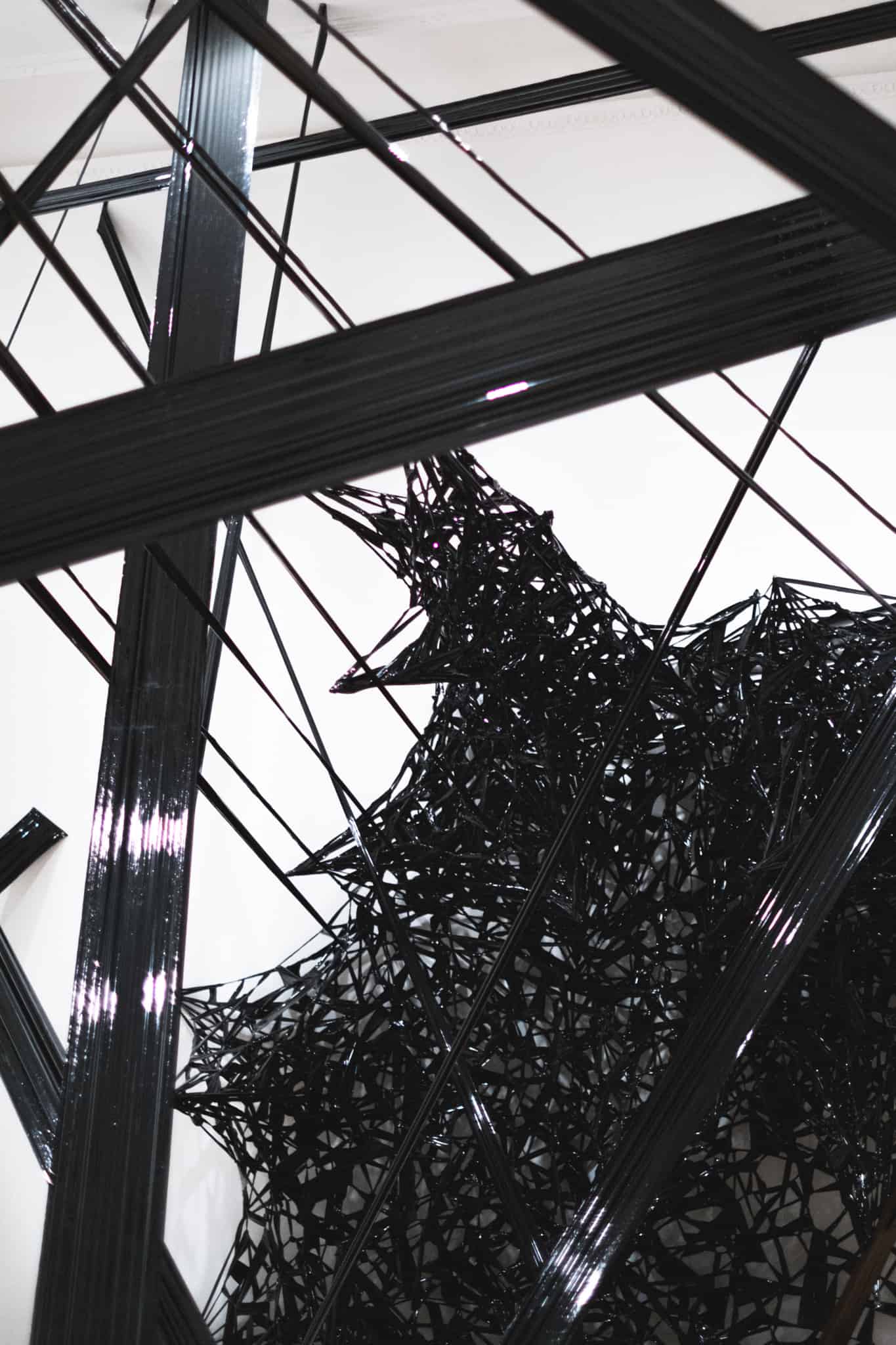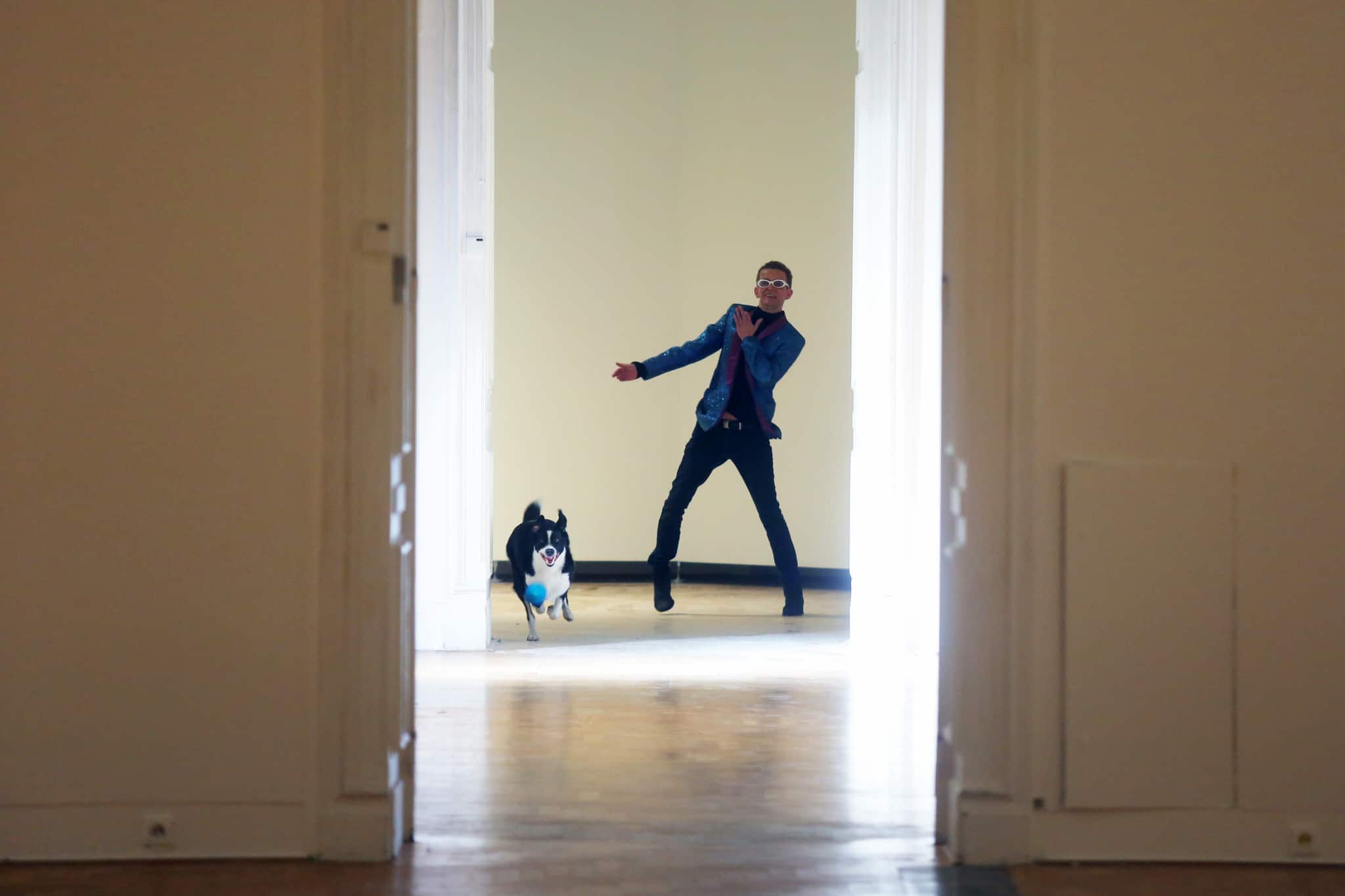If you have missed a fresh outlook on Polish sculpture over the last sixty years, the sort of outlook that defies restrictive convention, the exhibit Sculpture in Search of a Place at the Zachęta National Gallery of Art in Warsaw could certainly remedy the situation.
The show belongs to a series of cross-sectional thematic exhibits organized at the gallery. Essential to this edition is viewer presence. The curator, Anna Maria Leśniewska, pulls the observer away from a traditional approach to sculpture and encourages exploration by way of unconventional juxtapositions which lead to a better understanding of the medium, conjuring the space filled with oddities representing the legacy of sculpture. The curator’s reflection centers on the notion of place, meaning the relation between space and a work of art. In lieu of a chronological survey, the presentation is reminiscent of a “montage.” As a result, the evolution of the perception of sculpture acquires clarity, whereas the impulses for change become more palpable. The exposition demands contemplation by forging a dialogue between individual pieces, as well as the viewers observing the intersectional processes. The rooms of Zachęta are transformed into Cabinets of Curiosities containing the hybrids, which are linked so closely to our reality. The presence of film should not come as a surprise. Every film takes on the subject of a hybrid, imbuing the sculptures with new contexts and spatial relations. The presentation, in which the old complements the new, transcends the sense of sight and perception of an open artwork and portrays the current status of this form of creative expression. Through this exhibit, Anna Maria Leśniewska intends to inscribe the history of Polish sculpture into the global reflection on the medium. Furthermore, this outstanding art show enters into a dialogue with the most recent presentations at Zachęta. In 2020, the exhibition of objects by the contemporary artist Monika Sosnowska introduced the theme of sculpture, while a connection exists between the two ongoing shows – Sculpture in Search of a Place and Rhizopolis by Joanna Rajkowska.

FROM CLASSIC TO MODERN FORMS
The pieces in the hall of Zachęta offer a succinct introduction to the narrative of the exhibit. We begin our journey alongside the most esteemed precursor of Polish sculpture who determined its potential as an autonomous form of artistic expression and started wondering about its place in the arts. This figure is of course Xawery Dunikowski, about whom Zbigniew Libera wrote: “ahead of him, there are only monuments and public glory.” There is a reason why Królikarnia, the branch of the National Museum in Warsaw, carries his name. It is worth pointing out that Dunikowski’s artistic practice has yet to be analyzed thoroughly.
Although the displayed Pregnant Women (1906) shocked the early twentieth-century audience, today it has already entered the canon of modernist sculpture. Neither the subject matter nor manner of presentation stirs emotions equally as strong as the ones that overpowered a certain critic and caused one of the pregnant women to lose an arm. The selection of this piece is an excellent way to make viewers realize how much the ways of thinking about sculpture have changed over the last hundred years. Another encounter with this artwork occurs in the form of Andrzej Wajda’s film Towards the Sun (1955), in which the pieces are placed by the seaside, thus acquiring new contexts.
On the opposite side of the hall, we find the contemporary sculptural object Flowing in Waves Towards Equilibrium, a piece created especially for this exhibit by Iza Tarasewicz. The spatial draft uniting the intellect and the passion for life closes the short introduction (from the perspective of the hall) and the entire narrative of the exhibit (from the perspective of the exposition).

SURVEY OF CREATIVE PROCESSES
As mentioned before, the assemblage character of an exhibit is designed to encourage reflection about the contemporary understanding of sculpture as well as some of the most recent processes affecting the way we interpret art. The curator strives to pinpoint this wide variety of impulses. In the following sections, I will attempt to draw your attention to the most significant catalysts for change.
The Concept of an Energy Field by Andrzej Pawłowski published in 1966 portrays works of art in terms of contained energy. In that sense, the artist as the energy carrier creates this field, while the viewer interacting with a piece generates their own dynamic energy and co-opts the experience. Today, we are familiar with the concept. Therefore, the unveiled survey of creative processes provides us with the opportunity to extrapolate this power and open up new possibilities.
For the sake of clarity, spatial art was subsumed under thematic categories, such as space, elements, montage, home/studio, human, fullness/nothingness and machine. In the exhibit, we can encounter famously iconic pieces of Polish sculpture as well as lesser known artworks. One should bear in mind they will also see the works of artists using a variety of different mediums while witnessing the hybridism of art on site.

SPATIAL RELATIONS
The patron of this part of the exhibit is Katarzyna Kobro, an artist who championed the view that sculpture becomes complete in the process of integration with space. According to Kobro, space is a part of sculpture and as such it could become the sculpture in and of itself. The artist based her pieces on rhythm, color and spatiotemporal calculations. The groundbreaking theories of sculpture formulated by Katarzyna Kobro and Władysław Strzemiński influenced future generations of artists. The exhibit at Zachęta features the visualization of a spatial composition by Katarzyna Kobro juxtaposed against the works of contemporary artists referencing the pioneers of avant-garde. For instance, Kamil Kuskowski tells a story about the form by turning the letters from the a.r. alphabet created by Strzemiński (1930) into three-dimensional spatial objects, also alluding to the educational programmes of the Łódź-based academy (1945). In her work The Weight of 8, Marlena Kudlicka explores the correlation between space and language.
Any discussion of the notion of space in relation to objects is bound to be incomplete without the acknowledgement of the artistic practice of Magdalena Abakanowicz, who infused her material with a spatial quality. Space was a quintessential element of her works, including those placed in her studio. The so called Abakans are positioned on the verge of textile and sculpture art. The Monumental Composition (1973-1975) displayed at Zachęta evokes a strong emotional response, perhaps even a sense of threat or a need to find shelter in it. This presentation is complemented by works of art by Julian Jończyk, Antoni Mikołajczyk and a series of videos, which investigate the role of light.

OUTSIDE OF OUR POWER AND CONTROL
Another collection of artwork is brought together by the common subject of natural elements and undefined force. The monumental work by Robert Kuśmirowski entitled Monolith (2020) stands at the center of this exhibition space. Kuśmirowski is not an artist readily associated with traditional sculpture. His interests revolve around relations and contexts arising from his meticulously constructed objects and worlds. The giant boulder in the Narutowicz room symbolizes the world of sculpture, its natural and primal aspect. The power of this material is enhanced by the remaining elements of fire, water and air/space. They are evoked, for instance, in the videoart by Norman Leto. In addition, this section of the exhibition features folk sculptures, which represent spirituality. The curator’s decision to include folk art in the presentation was motivated by their primordial connotations and energy. Not only do they portray the spiritual aspect of sculpture, but they also signify the former understanding of the medium which used to carry out a religious function.

SPATIAL ART AS A SPECTACLE
The exhibition in the adjacent room focuses on the concept of a montage, previously mentioned in relation to the entire narrative of an exhibit. The curator places a particular emphasis on the meaning of montage in contemporary art that, to put it simply, could be described as the combination of various mediums. Its hybrid quality is also characteristic of our modern-day reality. The objects on display were created in connection with either a theatric performance or as elements of set design in films. Today, they are placed in the art gallery, their original dominant meaning erased and altered. The unity of the arts is impossible according to Tadeusz Kantor, whose The Trumpet of the Last Judgement, which was created for a theatre performance of Where Are Last Year’s Snows, is displayed in this section of the exhibit.
BETWEEN VISION AND MATERIALITY OF AN OBJECT
The work space of an artist, the space teeming with his/her personality, is the main subject of another presentation. Here, the artist’s studio is viewed as the original source of creative energy where the idea acquires the material form. Anna Maria Leśniewska devotes special attention to the artistic practice of Henryk Morel, which she also discussed in her book titled Henryk Morel. Oscylacje. Morel stressed the immense significance of viewers in constructing the meaning of a piece of art. His objective was to stimulate their sensibility in order to unlock the full interpretative “potential” of a given project.

BODY AND SENSES
Our bodies are the vessels that allow us to interact with a work of art. Meanwhile, it is the work of art that could help us realize our corporeality which accompanies spirituality and intellect. Therefore, a human being complements every work of art. The pieces gathered in this gallery room embody life and death as two certainties of our existence, so the presence of Alina Szapocznikow and Katarzyna Kozyra should come as a surprise to no one. What is more, we have another chance to transcend the sense of sight due to the artwork of Anna Królikiewicz, which releases the smell of blood. According to the artist, the sense of smell is the most important because olfactory sensations evoke memories. Art is also capable of bringing the repressed past to the surface as demonstrated by Lego. Concentration Camp by Zbigniew Libera. Death and spirituality as permanent components of our existence are also depicted in works by Władysław Hasior.
It is difficult to realise the rational reasons and remember the impulses which made me engage in this profession. I lay the decision on some sort of private metaphysics of fate, which made me start practising plastic arts.”[1] This is how Władysław Hasior begins his Thoughts on art. “Private metaphysics of fate.” Maybe. Someone else might call it an “inner need”, or simply “talent”. Whatever the mechanism was, it made Hasior a true artist, an extraordinary creator, a person impossible to overlook.
CONTRASTS – ALL/NOTHING
The pieces exhibited in this room make the audience realize the diversity of potential forms assigned with spatial art, as well as its rich connotations despite the scarcity of means. Anna Maria Leśniewska assembled this part of the exhibit on the basis of contrast, juxtaposing the work Aggression from the series Crystallization of Space by Ludwika Ogorzelec (2021) against the intimate piece of Koji Kamoji titled The Hole and the Rock (2018).
Upon leaving the exposition dedicated to the subject of the body, we enter a space celebrating a diversity of sculptural forms where the viewer can simultaneously feel both its palpable weight and its more sublime, tranquil nature. The sculpture by Ogorzelec seems almost taunting, urging the audience to interact with it. Light also plays a huge role in this case. The artist’s intervention redefines the gallery space she initially encountered, whereas the work of Koji Kamoji, which utilizes a delicate stream of light to reinforce the focus, operates as a sort of mirage or ephemeral afterimage.

TOWARDS THE THINKING MACHINE
The final section of the exhibit focuses on material. Metal is often used to make sculptures owing to its malleable properties and ease of transformation. Despite the fact that this material can be shaped and adapted to best express the artist’s vision, we tend to associate it with something robust, foreign and highly technical. Following this line of thought, the curator presents a fascinating array of pieces utilizing this material. The attention of every visitor will be inevitably drawn to Senster, the kinetic sculpture by Edward Ichnatowicz created in the early 1960s. Of course, due to its size and material, it can seem heavy and overbearing. However, one can also appreciate its mechanical sensuality and delicate motions. The object of Ichnatowicz, an achievement in terms of both art and science, reacts to the human presence. It goads reactions, wants to talk and fascinates. For those working in the field of robotics, the object represents a triumph of technology. For visitors of Zachęta, it is an aesthetic experience begging the questions about the future of sculpture.
Sculpture in Search of a Place is an exhibit you cannot afford to miss. It offers an incredible opportunity for reflection on the nature of spatial art, unveils unorthodox contrasts that throw you off balance in the sense of an acquired certainty of seeing, galvanizes you into actually noticing the evolution of sculpture throughout history and confronting the past. The creative energy compels an artist to conjure up brand-new and original forms, while we the viewers are compelled to activate all of our senses to fit sculpture into our reality, which is in a constant state of flux. The art show curated by Anna Maria Leśniewska can be the starting point for further investigation and questioning. However, it is the viewers who arrive at the answers themselves following an active dialogue with the presented pieces.





